Organic Chemistry ACS Review (Mechanisms)
1/310
There's no tags or description
Looks like no tags are added yet.
Name | Mastery | Learn | Test | Matching | Spaced |
|---|
No study sessions yet.
311 Terms
Percent Yield
=100(product mass/theoretical mass)
Diels Alder
forms cyclic hexane from a diene and a dienophile.
Friedel-Crafts
Add acyl or akyl group
Grinard
add alkyl or aryl group
Wolf-Kirschner, Clemmenson
Reduce ketone to alkane
Wittig
Convert aldehyde/ketone to alkene
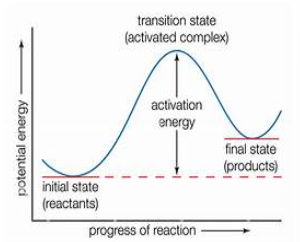
Transition State
Maximum on the reaction-coordinate curve: least stable intermediate.
Activation Energy (Ea)
Energy of the TS relative to the reactant
Change in enthalpy is <0
for an exothermic reaction.
Change in enthalpy is >0
for an endothermic reaction
Hammond-Leffler postulate
The TS is more like the reactant or product that is closer in energy
An endothermic TS is like
the product
An exothermic TS is like
the reactant
Exergonic
large and negative expelling of energy
A reaction with exergonic DG
has a product likely controlled by thermodynamics
Large Keq corresponds to
large amount of product relative to the reactant
If a reaction has a large Ea
TS controls the reaction instead of product-reactant thermodynamics
When a solvent stabilizes an intermediate
Ea decreases and rate of reaction increases
Charged complexes are stabilized
by polar solvents
Lewis acid
electron pair acceptor
Bronsted lowry acid
proton donor
Lewis base
electron pair donor
bronsted lowry base
proton acceptor
A weak H-A bond
the acid is more likely to donate its proton.
High electronegativity of A (in HA)
increases the strength of the H-A bond, making it harder for the acid to donate its proton.
inductive effect of substituent on A (in HA)
decreases the strength of the H-A bond, making it easier for the acid to donate its proton. (electron withdrawl)
Inductive effect
the electron-withdrawing effect of substituents that stabilizes the conjugate base, enhancing acid strength.
More “s” character in a hybrid orbital
weakens the H-A bond, making the acid stronger.
A resonance stabilized conjugate base A-
Increases acid strength in corresponding HA by delocalizing the negative charge through resonance, thus stabilizing the conjugate base.
A base is
a nucleophile
Nucleophile
a chemical species that donates an electron pair to form a chemical bond in reaction.
Electronic effects shifting electron density
increases base strength
Alkane =
Hydrocarbon with only single bonds
Alkanes have weak
intermolecular forces
Alkanes are non
cyclic (formula C_nH_2n+2)
Alkanes geometry is
tetrahedral around each carbon
Cycloalkane formula
C_nH_2n
Bicyclic
two fused/bridged carbon rings
Cyclopropane distance of an e- from the nucleus
n = 3
cyclobutane distance of e- from nucleus
n = 4
cyclopentane distance e- from nucleus
n = 5
cyclohexane distance of e- from nucleus
n = 6
Cyclopropane structure is
highly strained
cyclobutane structure is
flexible
cyclopentane structure has
slight puckering to minimize angle strain.
cyclohexane stable conformer structure is
chair
cyclohexane less stable structure is
boat
cyclohexane structure perpendicular to plane of the ring is
axial position
cyclohexane structure in plane with the ring is
equitorial position
Cis
two substituents in the upright position
trans
one substituent up and one substituent down
hydrogenation of alkynes to form alkanes
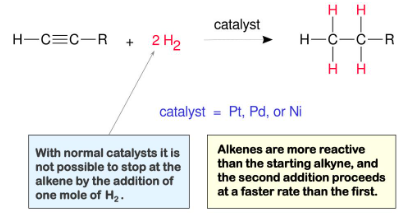
Possible catalysts for hydrogenation of alkynes and alkenes
H2, Pd, Pt, Ni
Free radical reaction of alkene
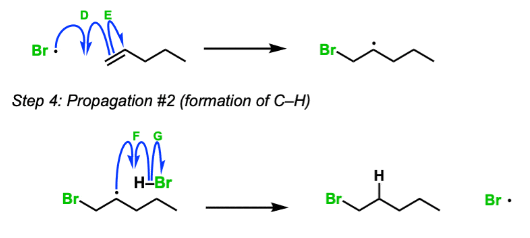
Reduce haloalkane
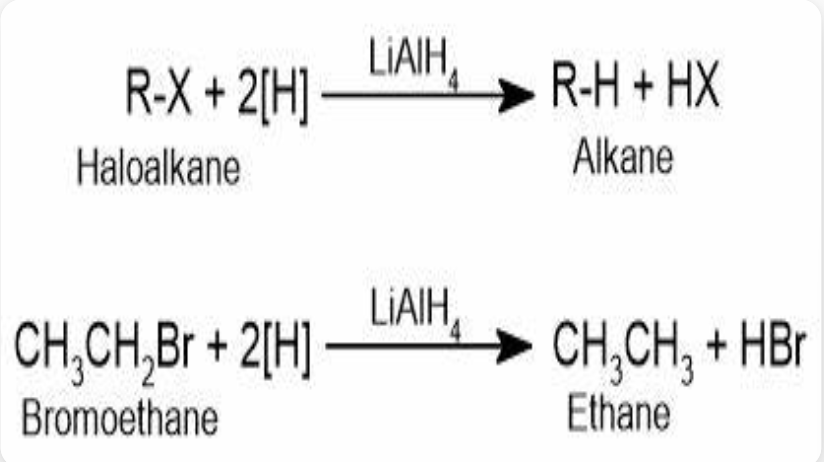
possible catalysts in the reduction of haloalkanes to alkanes
Metal hydrides, and metals alongside H giving species (like Mg+H2O), Plutonium, Nickel
Friedel-Crafts alkylation
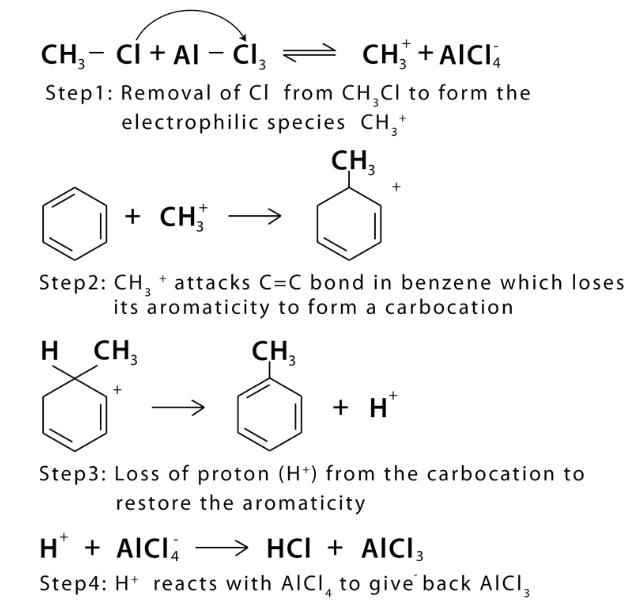
Friedel Crafts alkylation catalyst
Aluminum Chloride (AlCl3)
Combustion of alkanes

Halogenation to haloalkane
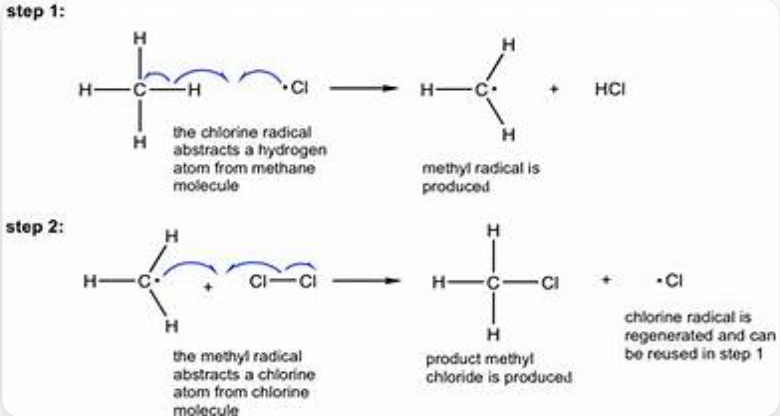
Properties of Alkene
Non-polar, flammable
Nomenclature of Alkenes
Use # to denote the C=C position, add -ene to prefix
Isolated alkene nomenclature
C-C=C-C-C=C-C
Cumulative alkene nomenclature
-C=C=C-
Polyunsaturated fatty acid alkene nomenclature
2 or more C=C
Allene alkene nomenclature
Adjacent C=C=C
Vinyl group alkene nomenclature
H_2C=CH-
Methylene group alkene nomenclature
H_2C=
Allyl group alkene nomenclature
H_2C=CH-CH_2-
Vinyl Halide alkene nomenclature
Halide replaces -H on >C=C<
Conjugated alkene nomenclature
Alternate C-C and C=C (resonance)
Alkadiene
An alkene containing two double bonds, typically in a chain arrangement.
Alkatriene
An alkene containing three double bonds, typically in a chain arrangement.
Annulene
Conjugated monocyclic hydrocarbons with alternating double bonds.
Aromatic cyclic ions
are ions that contain a cyclic structure with conjugated pi electrons, typically displaying resonance stability.
Isomers of alkenes
have no free rotation of C=C
In a non-cyclic alkene
the cis isomer is more stable than the trans isomer due to steric hindrance
In a cyclic alkene
the cis isomer is more stable than the trans isomer due to angle strain and steric interactions.
Hofmann Rule
Form the least substituted alkene
Markovnikof Addition
H adds to the C with the most -H’s and the OH or other group adds to the C with the fewest -H’s.
Zaitsev Elimination
Form the more substituted alkene
Dehydration of alcohols
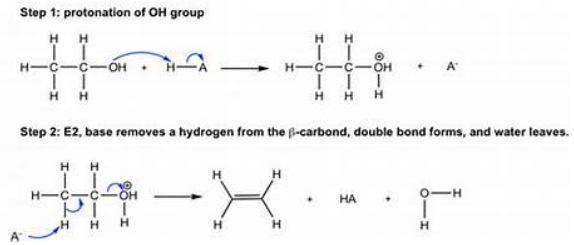
Dehydrohalogenation of haloalkane
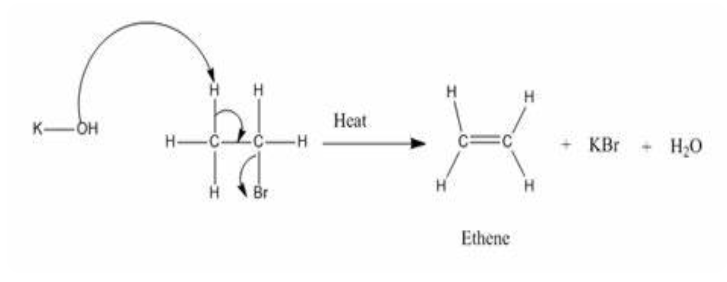
Dehalogenation vicinal dihalide

Hydrogenate alkyne
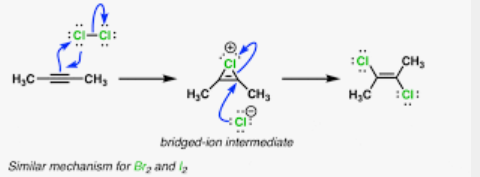
Alkene combustion

Markovnikov 2 and 3 degree hydration of alkene, 1 degree ethene rearrange

Hydroborate oxidation (anti-markovnikov)

Oxymercuration-demercuration of alkenes to alcohols

Hydrohalogenation of alkenes

Halogenate vicinal dihaloalkane from alkenes

Anti addition of halohydrins from alkenes

Hydroxylation of alkenes to form 1,2-diol

Oxidation of alkenes to carboxylic acid

Ozonolysis of alkenes to form ketone

Hydrogenation of alkenes to alkane
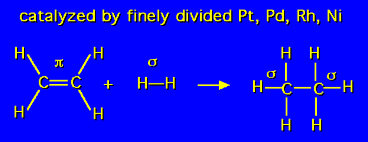
Free radical polymerization of alkenes
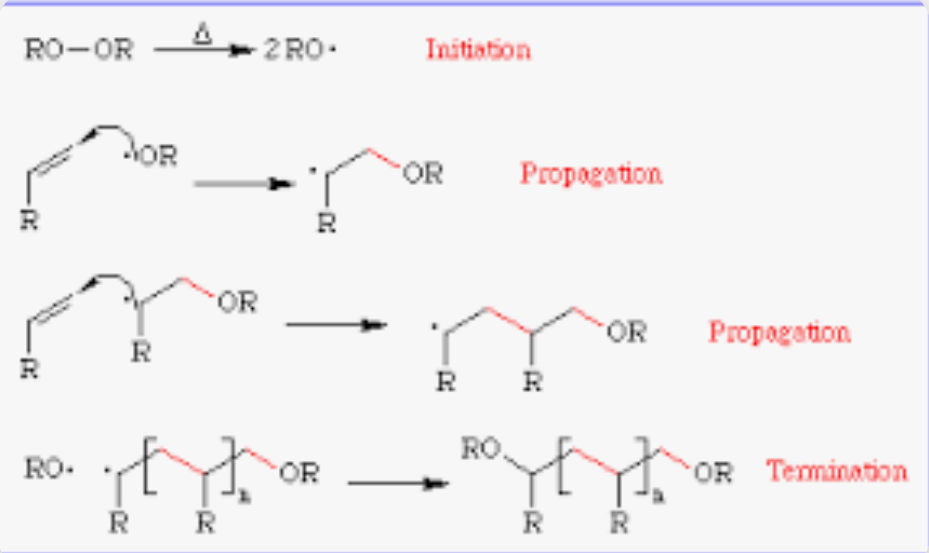
Allylic halogenation of alkenes
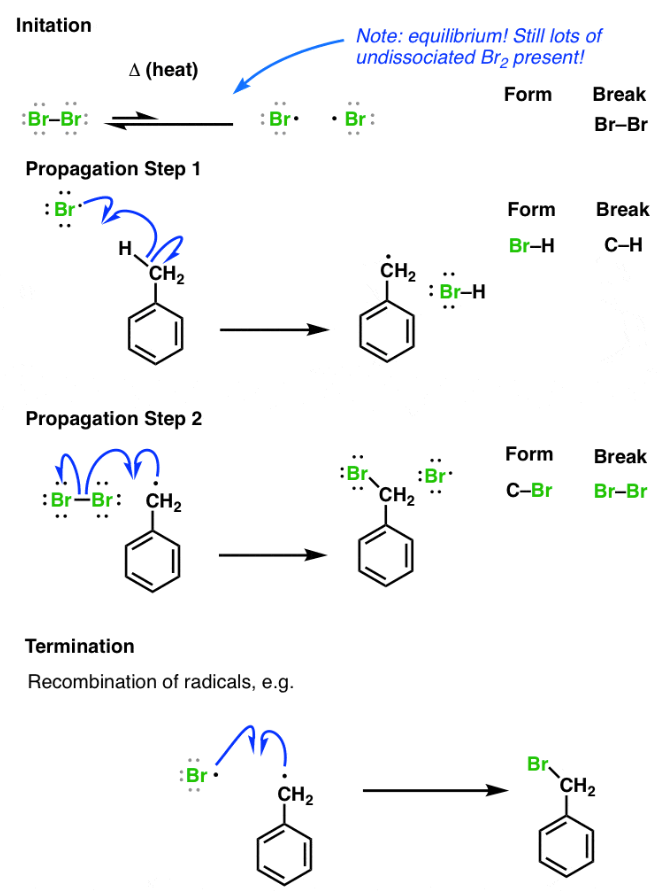
Diels alder of alkenes

Properties of benzene/arene
Insoluble in water, miscible with non-polar organic solvents